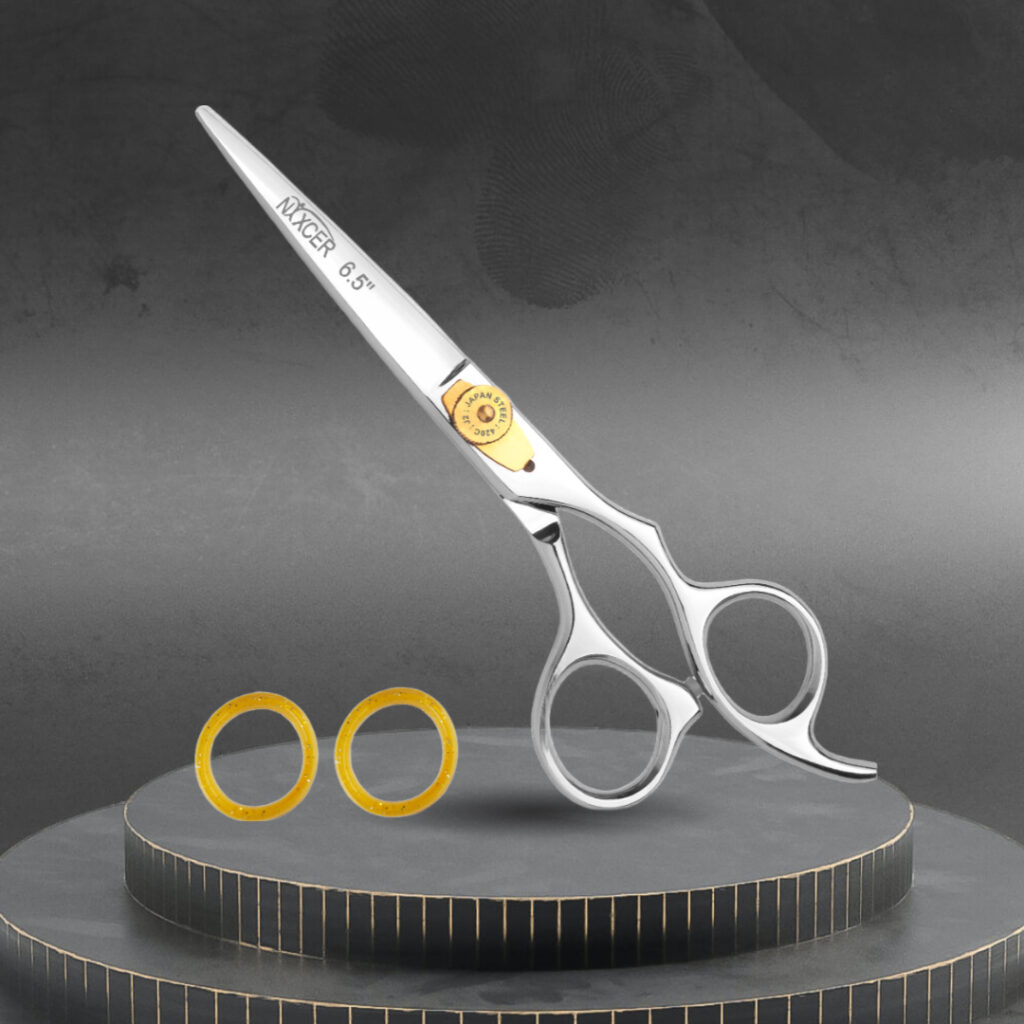Types of Hair Textures
There are generally four main types of hair textures: straight, wavy, curly, and coily. Straight hair is smooth and lacks curl. Wavy hair has a gentle, S-shaped pattern. Curly hair forms tighter, more defined curls or ringlets. Coily hair, also known as kinky hair, has very tight curls or zigzag patterns. Each hair type has its unique characteristics, including thickness, porosity, and moisture retention, which influence how it responds to styling and cutting.
Different Hair Textures Need Different Hair Cutting Scissors
It is a fact that different hair textures require different hair cutting scissors. The right scissors can significantly impact the precision and quality of the haircut. For example, fine or straight hair may benefit from sharp, precise scissors to avoid blunt, uneven cuts. Wavy or curly hair often requires scissors that can handle thicker strands and create softer, blended lines. Coily hair needs scissors with a strong, sharp blade to manage its density and create clean, defined shapes. Using the appropriate scissors ensures better control, accuracy, and overall results tailored to each hair texture.
How to Choose Hair Cutting Scissors for Different Hair Textures
Selecting the right hair cutting scissors for different hair textures is crucial for achieving optimal results and maintaining the health of the hair. Here’s a comprehensive guide to help you choose the right scissors based on various hair textures:
1. Understanding Hair Textures
Straight Hair: Smooth and lacks curl, can be fine, medium, or thick.
Wavy Hair: S-shaped pattern, more volume than straight hair, can be fine to coarse.
Curly Hair: Defined curls or ringlets, can be loose or tight, generally thicker and prone to frizz.
Coily Hair: Very tight curls or zigzag patterns, often very thick and dense, can be fragile and dry.
2. Types of Hair Cutting Scissors
Straight Edge Scissors: Ideal for clean, precise cuts on straight and fine hair.
Texturizing Scissors: Feature notched blades to add texture and remove bulk, suitable for wavy and curly hair.
Thinning Scissors: Have teeth on one blade to thin out thick hair, useful for managing volume in curly and coily hair.
Curved Scissors: Designed for shaping and layering, helpful for creating soft lines in wavy and curly hair.
3. Factors to Consider When Choosing Scissors
Blade Type: Sharp, convex blades are great for precision cuts on fine, straight hair, while beveled edge blades provide better grip for thicker, coarser hair.
Scissor Length: Shorter scissors (5.5 to 6 inches) offer better control for detailed work, ideal for straight and fine hair. Longer scissors (6.5 inches and above) are better for cutting larger sections, suitable for wavy, curly, and coily hair.
Handle Design: Ergonomic handles reduce strain and provide better control. Offset handles are ideal for professionals working for extended periods, ensuring comfort and precision.
4. Matching Scissors to Hair Textures
Straight Hair: Use sharp, straight edge scissors for clean cuts. Avoid texturizing scissors that can create unwanted frizz or flyaways.
Wavy Hair: Texturizing scissors help add dimension and manage volume. Curved scissors are useful for shaping and blending layers.
Curly Hair: Thinning scissors are beneficial for removing bulk and reducing volume. Texturizing scissors help in creating soft, blended cuts without disturbing the natural curl pattern.
Coily Hair: Strong, sharp blades are necessary for clean cuts. Thinning scissors can help manage thickness, while texturizing scissors add shape and definition.
5. Maintenance and Care
Proper maintenance of hair cutting scissors is essential for ensuring their longevity and performance. Regularly clean and oil the scissors to prevent rust and maintain sharpness. Sharpen the blades as needed to keep them in optimal condition. Store the scissors in a protective case to avoid damage.
Final Thoughts
Choosing the right hair cutting scissors for different hair textures is vital for achieving the best results and maintaining the health and appearance of the hair. By understanding the characteristics of each hair type and selecting scissors that match their specific needs, you can ensure precise, professional cuts. Proper maintenance and care of the scissors further enhance their performance and durability, making them a valuable tool in any stylist’s arsenal.



